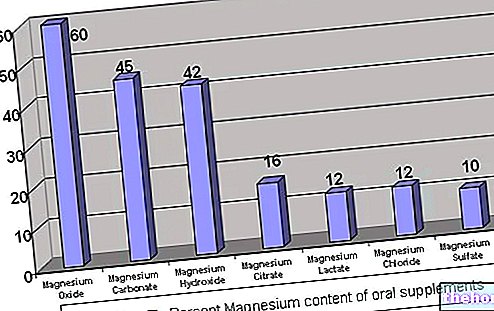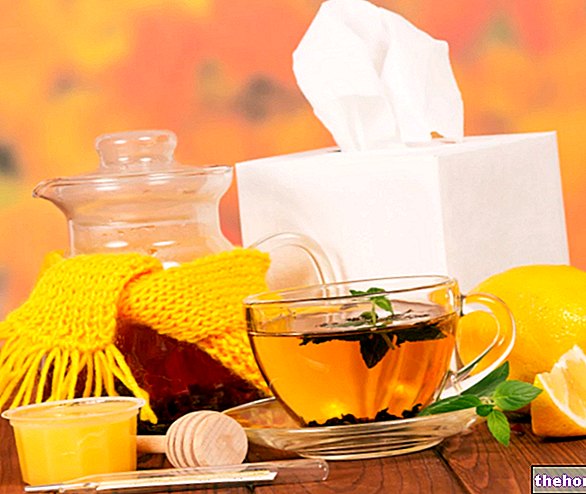Two plants particularly rich in tannins are grouped under the term Potentilla, respectively called:
tormentilla (Pontetilla tormentilla Nec. = P. erecta L. Rau.)
and argentina (Potentilla anserina L.).

Potentilla anserina
Botanical name: Pontetilla anserina L.
Common names: Potentilla, Anserina, Argentina
Family: Rosaceae
Drug: whole plant
Perennial herbaceous plant widespread in the grassy and marshy foothills areas. It has pinnate leaves composed of leaflets with a serrated edge, and flowers of a very intense yellow with 5 petals (contrary to the 4 of the Pontetilla tormentilla).
Tannins (6-10%), with a prevalence of
ellagic tannins
Phytosterols, triterpenes (tormentol)
Flavonoids and leukoanthocyanidins
Astringents
Anti-inflammatory
Spasmolytic
MAIN INDICATIONS: due to its richness in tannins, the main use of Argentina is as an astringent remedy, precious in diarrheal forms.
There are also indications for its spasmolytic activity in the gastrointestinal and uterine tract, which makes it useful against abdominal cramps (gastrointestinal tract disorders characterized by spasms) and painful menstruation (dysmenorrhea).
FURTHER INDICATIONS: Potentilla anserine is indicated in the symptomatic treatment of inflammatory processes affecting the oropharyngeal mucous membranes; always in the form of rinses, it helps to soothe toothache. As a tannin drug, it can be used for external washing in the presence of wounds, and internal in cases of leucorrhoea.
The dried Argentine root is used as a base for decoctions with a stimulating, tonic and carminative action.
NOTES: the adjective astringent belongs to all those substances which, used internally or externally, cause a constricting action on blood vessels, hindering vasodilation and the consequent increase in vascular permeability that accompanies inflammatory phenomena.
The astringent capacity is typical of drugs rich in tannins, such as Argentina.
When applied topically to damaged skin or mucosa, tannins bind tenaciously to epithelial cell proteins. Once in contact with the intestinal mucosa, therefore, the tannins decrease its permeability, producing an astringent effect particularly useful in the presence of diarrhea. At this and other levels, protein coagulation leads to the formation of a protective and antisecretive layer, useful for preventing the passage of pathogenic microorganisms and calming local inflammation.
METHOD "D" USE AND DOSAGE:
Infusion (for internal use in diarrheal forms): 3 grams of drug per cup (150 ml), to be taken several times a day.
Decoction (for internal use as an antispasmodic): 2-3 grams of the drug per cup (150 ml), to be taken several times a day.
Decoction (for rinses, gargles, compresses and topical use): 50 grams of drug per liter of water.
Powder / dry extract: 3-6 grams of drug per day divided into three intakes, as recommended by the herbalist or the product label.
SIDE EFFECTS, CONTRAINDICATIONS, WARNINGS
Contact your doctor if diarrhea persists after three to four days of treatment with argentina. Given the absence of reliable data on the toxicity profile in such conditions, its use in pregnancy, lactation and under 14 years is not recommended.
The use of herbal preparations, including those based on potentilla anserine, can negatively interfere with the absorption of other drugs, increasing or decreasing their therapeutic effect. It is therefore recommended to take this remedy at least 2-3 hours after "taking medicines.
In sensitive patients, treatment with argentina can cause episodes of nausea and vomiting, and increase gastric irritation.
Select plant Fir Acacia Acerola Sorrel Yarrow Yarrow Yarrow Aconito Adatoda Garlic Agnocasto Agrimonia Alchemilla Alkekengi Aloe Altea Witch Hazel Ammi or Visnaga Pineapple Andrographis Anemone Pulsatilla Angelica Anise Star Anise Japanese Star Anise Bitter Orange Bitter Areca Arnica Harpagophytum Arpagophyte Artemisia Asteragus Basil Asparagus Asparagus Peruvian Asparagus Asparagus Asparagus Hawthorn Boldo Borage Shepherd's Purse Boswellia Bucco Butea superba Cocoa Coffee Cajeput Calamus Calamus Marigold Camedrio Chamomile Roman Chamomile Camphor Cinnamon Ceylon Maidenhair Capuchin Artichoke Cardamom Cardiac Thistle Asian Thistle Carvi Cascara Cassia Catecu Catha Cabbage Celandine Chicory Centaurea Cinnamon Cypress Celandine Chives Cypress Coca Cola Colchico Combreto Condurango Comfrey Coriander Cranberry Barberry American Chrysanthemum Cumin Turmeric Damiana Digital Dioscorea Drosera Dulcamara Dunalilella Echinacea Eder a Ephedra Elenio Eleutherococcus Helichrysum Evening primrose Horsetail Alfalfa Erica Euphrasia Erisimo Escolzia Eucalyptus Farfara Farfaraccio Calabar bean Fenugreek Fennel Phytolacca Frangola Ash Fumaria Japanese Mushrooms Galega Ganoderma lucidum Garcinia Cambogia Mulberry Gentian Broom Ginkgo Guipana Ginkgo Guipana Guipane Gynestra Ginkgo Hibelia Gymnasium Hibelia St. John's Wort Horse Chestnut Ispaghul Hyssop Jaborandi Kava kava Konjac Laminaria Cherry Laurel Lavender Lemongrass Lespedeza Lovage Icelandic Lichen Lemon Flax Lippia Licorice Lobelia Hops Maca Marjoram Maize Mallow Manna Marrubio Marrubio d "water Matè Melaleuca Meliloto Americeta Melissa Myrtle Myrtle Walnut Nutmeg Walnut vomica Olive treeMeadowsweet Ononide Opuntia Oregano Orthosiphon Nettle Poppy Papaya Parietaria Feverfew Passiflora Chili Pepper Perilla Periwinkle Phyllanthus Plantain Picrorhiza Pilosella Pine Piscidia Podophyll Polygala Grapefruit Parsley Psyllium Pueraria mirifica Rosebush Safflower Safflower Safflower Rosewood Sackweed Raisin Sauce Raisin Quercus Serenoa repens Soy Solidago spirulina Tamarind Tansy Dandelion Badger Tea Lime Thyme Tormentilla Clover Fibrin clover Tuia Uncaria Bearberry Valerian Vanilla Mullein Verbena Veronica Viburnum Vinca Pansy Mistletoe Vine Withania Yohimbe Saffron Ginger Pumpkin Aconiae Afagenee Afagenee Select disease Aconiae Afagenaeia Functional Halitosis Breastfeeding Allergy Anemia Anguish Anxiety Arteriosclerosis Gouty arthritis Rheumatoid arthritis Arthrosis Asthenia Asthenia Asthenia Sex Man Asthenia Sex Woman Blef Aritis and Conjunctivitis Eye Bags Bronchitis Gallstones Kidney Stones Salivary Stones Baldness Androgenetic Candida Fragile Hair Caries Headache Cellulitis Kinetosis Cystitis Climacteric Cholecystopathy High Cholesterol Ulcerative Colitis Colonoscopy Contusions Hematoma Convalescence Couperose Depression Dermatitis Dermatitis Diabetes Dyspiarrhea Diabetes Disease Dyspiarrhea Diabetes Dyspiarrhea Diabetes Dysporrheia Dyspiarrhea Diabetes Diseases Ereticism Cardiac Fever Fibromyalgia Flatulence Phlebitis Gastritis Chilblains Gingivitis Herpes Loss of appetite Urinary infections Influenza Insomnia Hypersomnia Irritable intestine Prostatic hypertension Prostatic hypertrophy Prostatic hypertrophy Jaundice Laryngitis Renal lithiasis Tooth pain Sore throat Thinness Menopause Meteorchia Disease of Mononucleosis Periarthritis Piorea Low blood pressure Prostatitis Psoriasis Cold Breast fissures Anal fissures Gastroesophageal reflux Rhinophage ringite Rolls (abdomen fat) Wrinkles Salmonella Senescence Premenstrual Syndrome Sinusitis Quit smoking Overweight Fatty liver Constipation Stomatitis Stress Cough High triglycerides Ulcer Burns Fragile Nails Flushing Heat Warts Dizziness Herbal properties Tanning Abortive Antiallergic Anesthetics Anesthetics Anesthetics Anesthetics Anesthetics Anesthetics antidiarrheal anticonvulsant Antidiaforetiche edematous anthelmintic antiemetic Antiemorroidarie antiphlogistic Antiidrotiche Antinevrotiche Antioxidants antipyretic antirheumatic antiscorbutic Antiseptic antispasmodic anti-uric Flavoring Aperitive astringent Balsamic Bechiche Capillarotrope cardiotonic Carminative Cathartic caustics Cicatrizant cholagogue choleretic Dyes Decongestants purifying Deodorants Detergents Disinfectants diaphoretic Detox Refreshing diuretic ECCI many emetic emmenagoghe Emollients Haemostatic Energy Epatoprotettrici Expectorants eupeptic photosensitizing Galattofore Galattofughe Galattogoghe Moisturizers Immunostimulators hypertensive Hypnotic Hypoglycemic hypotensive irritant laxative Soothing Narcotic Nervine Nutrients Odontalgiche Pectoral revulsive purgatives mineralizing fresheners rubefacient Scialagoghe Sedative soporific Starnutatorie stomachic stomatal Narcotics Tenifughe Tonic vasoconstrictor vasodilator vermifugal Vescicatorie vitamin salve




























